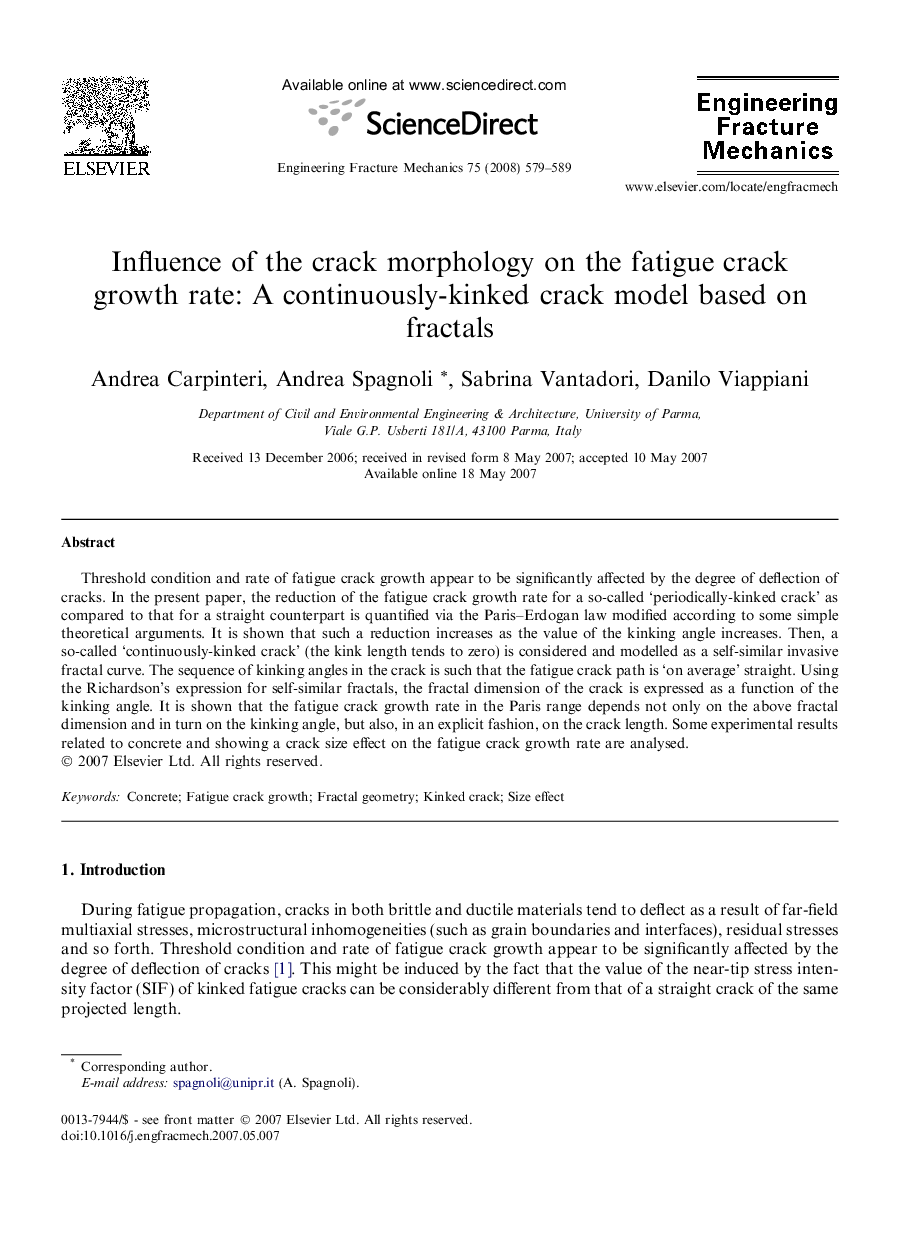| Article ID | Journal | Published Year | Pages | File Type |
|---|---|---|---|---|
| 772046 | Engineering Fracture Mechanics | 2008 | 11 Pages |
Threshold condition and rate of fatigue crack growth appear to be significantly affected by the degree of deflection of cracks. In the present paper, the reduction of the fatigue crack growth rate for a so-called ‘periodically-kinked crack’ as compared to that for a straight counterpart is quantified via the Paris–Erdogan law modified according to some simple theoretical arguments. It is shown that such a reduction increases as the value of the kinking angle increases. Then, a so-called ‘continuously-kinked crack’ (the kink length tends to zero) is considered and modelled as a self-similar invasive fractal curve. The sequence of kinking angles in the crack is such that the fatigue crack path is ‘on average’ straight. Using the Richardson’s expression for self-similar fractals, the fractal dimension of the crack is expressed as a function of the kinking angle. It is shown that the fatigue crack growth rate in the Paris range depends not only on the above fractal dimension and in turn on the kinking angle, but also, in an explicit fashion, on the crack length. Some experimental results related to concrete and showing a crack size effect on the fatigue crack growth rate are analysed.
